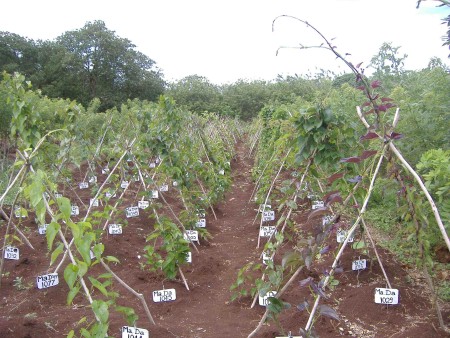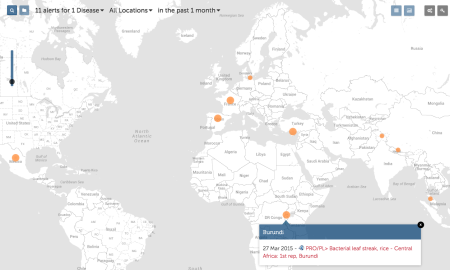A smidgen of good news from the Pacific island country of Vanuatu, recently hit so cruelly by Cyclone Pam. This just in ((Very slightly edited for clarity.)) from Roger Malapa, who’s in charge of the various field genebanks at the Vanuatu Agricultural Research and Technical Centre (VARTC) on the beautiful island of Santo, which was apparently less badly affected than others.
Minor damage to the banana collection but overall, everything is fine at VARTC and Santo. Yes there is enough material in the multiplication plots, mainly the root crops. I have just selected an early maturing variety on February: two-month harvest. We are harvesting our cassava now so cuttings can be prepared.
SPC’s Centre for Pacific Crops and Trees (CePaCT) does hold duplicates of some of these collections in vitro. But you can never have enough safety duplication in the Pacific.
Here’s what a bit of the root and tuber crop collection at VARTC looked like a few years ago when I last visited.

